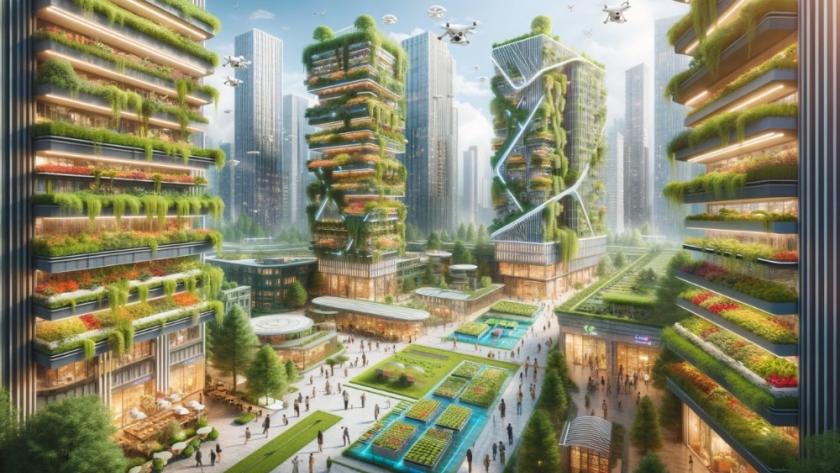
By Agroempresario.com
Urban agriculture is the practice of cultivating, processing, and distributing food in or around urban areas. It offers a solution to the challenges of food insecurity, environmental degradation, and limited green space in cities. This article explores various methods, benefits, costs, and ideas for urban agriculture, along with examples and the best cities for these initiatives.
1. Community Gardens
- Description: Community gardens are plots of land gardened collectively by a group of people.
- Implementation: These gardens can be found in parks, vacant lots, or rooftops. Participants share the responsibilities and the harvest.
- Example: The Battery Urban Farm in New York City.
2. Rooftop Gardens
- Description: Gardens on the roofs of buildings, which utilize unused space.
- Implementation: These gardens can use soil or hydroponic systems. They often require structural assessments to ensure the building can support the additional weight.
- Example: The Brooklyn Grange in New York City.
3. Vertical Farming
- Description: The practice of growing crops in vertically stacked layers.
- Implementation: Often indoors, using LED lighting and controlled environments. Hydroponic or aeroponic systems are common.
- Example: Sky Greens in Singapore.

4. Hydroponics and aquaponics
- Description: Hydroponics is growing plants in a nutrient-rich water solution, while aquaponics combines fish farming with hydroponics.
- Implementation: These systems can be set up in various indoor spaces, using tanks and grow beds.
- Example: Oko Farms in Brooklyn, New York.
1. Improved Food Security
- Urban agriculture provides fresh, locally-grown produce, reducing dependence on distant food sources.
2. Environmental Benefits
- It helps reduce the urban heat island effect, improve air quality, and increase green spaces.
3. Economic Opportunities
- It creates jobs, stimulates local economies, and can reduce food costs.
4. Community Building
- It fosters community engagement and education, strengthening social ties.
5. Health Benefits
- Access to fresh produce improves diet quality and overall health.

1. Initial Investment
- Setting up urban farms, especially vertical farms and hydroponic systems, requires significant capital for infrastructure, equipment, and technology.
2. Maintenance
- Ongoing costs include water, nutrients, energy for lighting and climate control, and labor.
3. Regulatory Challenges
- Navigating zoning laws and acquiring necessary permits can be complex and time-consuming.
4. Space Constraints
- Limited urban space can restrict the scale of operations and necessitate innovative solutions.
1. Incorporate Technology
- Use smart sensors and IoT devices to monitor plant health, optimize water and nutrient use, and improve yields.
2. Integrate with Community Programs
- Partner with schools, community centers, and local businesses to create educational programs and distribution networks.
3. Utilize Vacant Spaces
- Convert vacant lots, underutilized buildings, and abandoned properties into productive urban farms.
4. Promote Green Roof Initiatives
- Encourage developers to include rooftop gardens in new building designs and retrofit existing buildings.

1. New York City, USA
- With initiatives like the Brooklyn Grange and numerous community gardens, NYC is a leader in urban agriculture.
2. Singapore
- Known for its innovative approaches, such as Sky Greens, Singapore is a model for vertical farming.
3. Paris, France
- Paris has ambitious plans to cover its rooftops with urban farms, aiming to produce 500 tons of food annually by 2030.
4. Toronto, Canada
- The city supports various urban agriculture projects, including community gardens and rooftop farms.
5. Berlin, Germany
- Berlin’s Tempelhofer Feld, a former airport turned public park, hosts community gardens and urban farming projects.

Urban agriculture represents a promising solution to many of the challenges faced by modern cities. By adopting innovative methods and technologies, cities can enhance food security, promote sustainability, and foster stronger communities. With careful planning and investment, urban agriculture can transform the urban landscape into a productive and vibrant environment.
